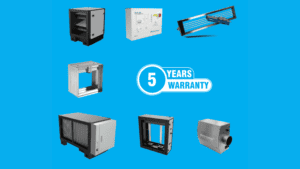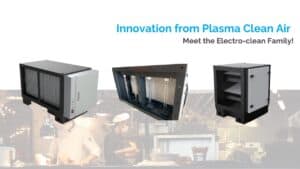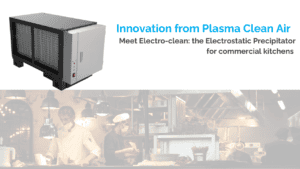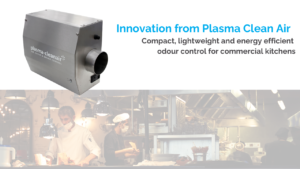The use of UV ozone and activated carbon in commercial kitchen ventilation for odour control is well known.
It is recognised by BESA in their DW 172 Specification For Kitchen Ventilation Systems and by EMAQ+ in their Guidance ‘Control of Odour and Noise from Kitchen Exhaust Systems’.
This blog discusses gaseous odour. If you would like to know more about the treatment of grease and smoke using Electrostatic Precipitators, check out our blog on Guidance on the Control of Odour and Noise from Commercial Kitchen Exhaust.
To learn more about general commercial kitchen ventilation, visit our FAQs.
The Importance of Residence Time
When using UV ozone injection or activated carbon filtration, Residence Time is important. Residence Time is the term used in EMAQ+ odour control guidance. It is also known as contact time or dwell time and is simply the time that the air carrying the odour is in the presence of ozone or activated carbon.
UV ozone generally needs a minimum of 2 seconds dwell time. This means that if the air velocity is travelling at 6-8 m per second, you will require 12-16 m of ductwork after the UV ozone injection point for effective odour treatment. This isn’t always possible in a commercial kitchen.
Activated carbon requires a minimum of 0.2s contact time for odour control. This is the time taken for air to pass through the activated carbon filter and the odour molecules to be adsorbed. The problem here is that activated carbon systems are big and bulky particularly if an odour control scheme requires 0.8s contact time activated carbon.
To give an idea of scale, to treat 2m3/s flow rate which is about average for a commercial kitchen, a 0.2s activated carbon system will be 1.2m H x 1.2m W x 0.75m long. This will increase in length to 3m if 0.8s dwell time is required.
Unfortunately, most commercial kitchens don’t have space to accommodate this size of filtration equipment.
The good news is that there are alternatives such as Canopy Mount UV when plant space is limited as well as combining UV ozone with activated carbon. In the latter case, the issue of UV ozone duct run and activated carbon bulk can be overcome when they are used together. But before we get into that, let’s talk about how activated carbon can be used to remove excess ozone.
How To Remove Surplus Ozone with Activated Carbon
Activated carbon is used in commercial kitchen odour control to remove surplus ozone. It does this by acting as a catalyst to convert ozone (O3) into oxygen (O2).
This is important for low level extraction of the kitchen ventilation system or when the extraction point is close to a ‘receptor’.
A receptor is a term used to describe a window, a door or an air intake louvre, for example, which is close to the extraction point and which may be affected by it. Quite simply, the activated carbon stops ozone from making its way back into a building and prevents residual ozone smell around the discharge point.
For best results, activated carbon is placed at the end of the extraction system just before the fan. The reason for this is to create a ‘reaction chamber’ for UV ozone to act on food odours. When we talk about a reaction chamber, we are referring to the duct run between the UV ozone injection point and the activated carbon. The bigger the distance between the ozone injection point and the carbon means that the ozone and cooking odours have longer to react.
Activated Carbon Used To Reduce Duct Length
When used on its own, UV ozone injection requires a minimum of 2 seconds dwell time for it to be effective. It is not always possible to achieve this in a commercial kitchen and we have found that combining UV ozone injection with 0.1s activated carbon, for example, helps to reduce the duct run.
In this case, ozone reacts with the cooking smells in the reaction chamber prior to the activated carbon, and it continues to act on the odour molecules which become trapped in the activated carbon.
As a simple rule of thumb, if you combine UV ozone and activated carbon you can reduce the residence time by 50%. For example, a two second UV ozone Residence Time can be reduced to 1 second. And a 0.2 activated carbon Residence Time can be reduced to 0.1s.
Speak to us to discuss options for your project.
Ozone Used To Extend The Life Of Activated Carbon
It is recommended to exchange activated carbon every 4-6 months, according to EMAQ+ and to carry out a UV ozone lamp swap every 12 months. By combining these two technologies, we have found UV ozone extends the life of activated carbon.
We first observed this in a KFC fried chicken restaurant that had to exchange their activated carbon every 6 weeks. This was a costly exercise. After installing an Xtract 2100 UV ozone injection system, the activated carbon exchange increased to 12 months delivering a Return On Investment in less than 6 months.
As well as extending the lifetime of activated carbon, we have found that we can reduce the amount of activated carbon by half when used in combination with UV ozone. As well as reducing the bulk of activated carbon, it makes it a more cost-effective solution for ongoing maintenance versus full carbon.
Summary
This blog has covered gaseous odour control and how UV ozone injection and activated carbon can be combined to reduce kitchen smells whilst reducing the length of the duct run and the size of the active carbon filter. The added advantage being that UV ozone can increase the life of activated carbon, saving money in ongoing maintenance.
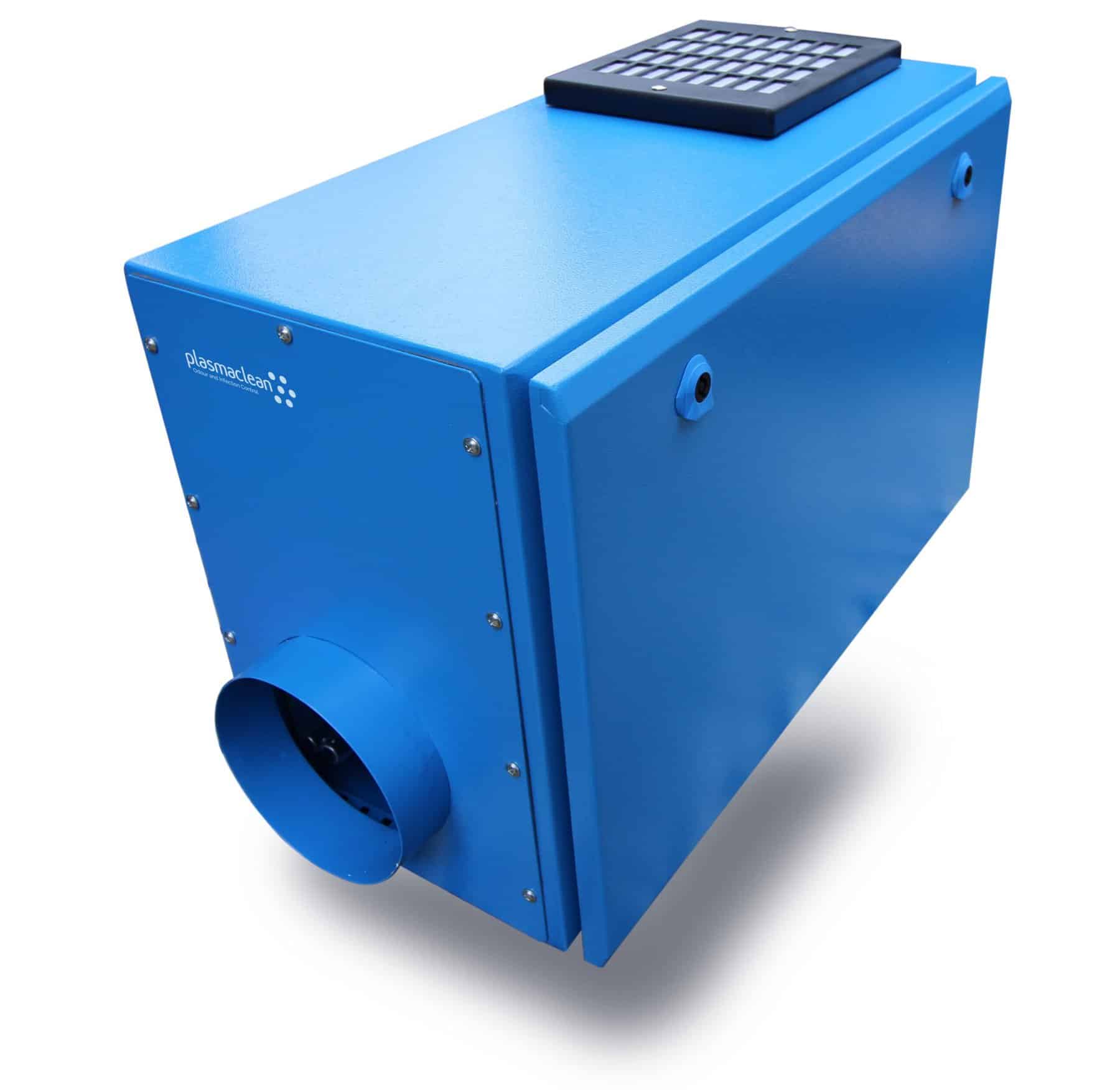
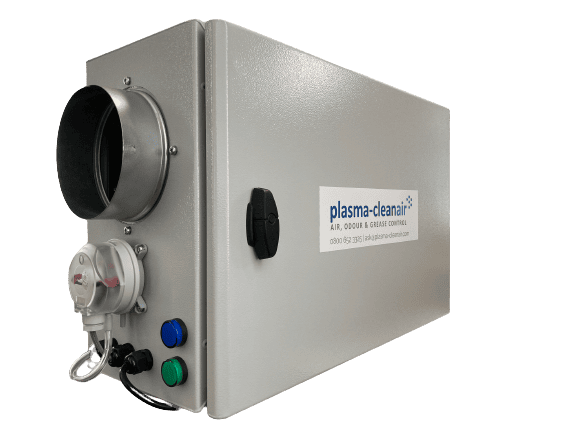
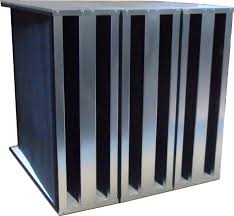
Get in Touch With Plasma Clean Air!
If you would like to know more about the treatment of grease and odour but are struggling with plant space, check out our blogs on Optimising your plant layout with canopy mount UV for grease & odour control solutions.
To learn more about general commercial kitchen ventilation, visit our FAQs.
Don’t hesitate to get in touch with our dedicated technical sales team for any additional questions you may have or if you’re embarking on a project and could benefit from expert advice. We’re here to assist you every step of the way and ensure your project’s success.

